Spring is here. Gobblers are sounding off, strutting their stuff, and doing their best to impress the ladies. But the bulk of this action lasts for only a short timeframe. Fortunately, each spring, the wild turkey breeding cycle is a predictable occurrence. Here’s what you need to know.
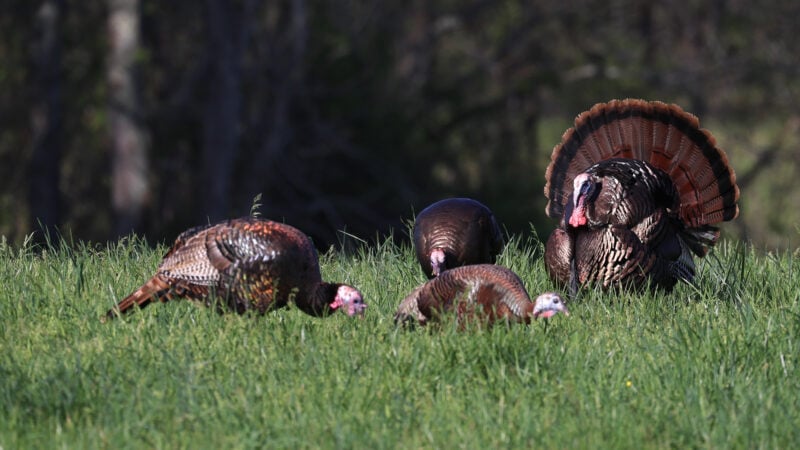
Fall and Winter Flocks
No, breeding doesn’t take place in fall, but the sorting of the pecking order does. A fall flock of turkeys is largely driven by gender segregation. Oftentimes, gobblers group up with other gobblers. Usually, hens group up with other hens. Sometimes, jakes remain with hen groups, but they also group up on their own, or join up with gobbler groups. Regardless, most fall turkeys remain with their own genders, and rarely cross over or mingle with other groups.
Within each fall and winter flock, pecking orders are sorted throughout the colder months. This is a time when gobblers determine dominance, and hens do the same. Of course, this process continues in spring, but much of it plays out before the breeding ever begins.
Late-Winter Shifts
As winter nears its end, things begin to change. Male and female flocks begin to break apart into smaller groups. Toms start to ease closer to where they’ll spend the spring. Hens do the same. It’s even common to see some minimal interaction between genders.
On occasion, you might begin to see some dominant gobblers increase gobbling and strutting activities. They’ll increasingly spend more time around hens, and while they won’t remain together, they will cross paths more frequently as winter wanes.
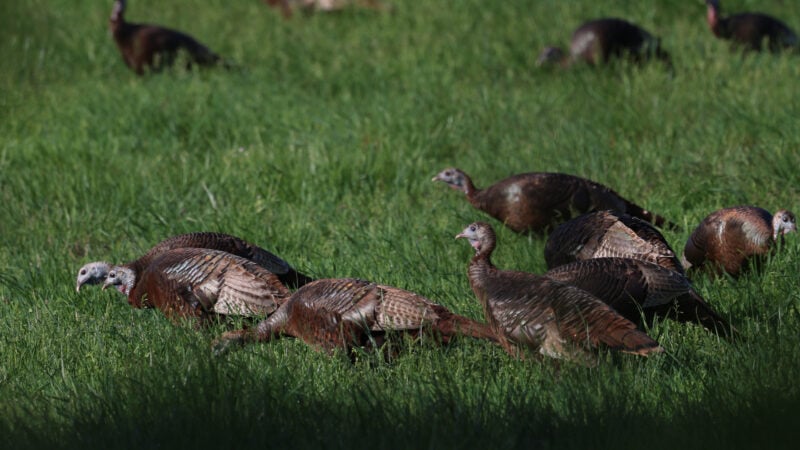
Early Spring Flocks
Once spring emerges, shifts continue to occur. March signals a key transition as gobblers, hens, jakes, and jennies alike transition to their spring haunts. Gobblers begin to break into even smaller groups, oftentimes forming “alliances” with up to two or three other gobblers, rarely more. It’s believed these are brothers, but science hasn’t confirmed that yet.
Mid- to late-March arrives, and toms really begin to gobble and strut. Some early breeding even takes place. Of course, the wild turkey breeding cycle is triggered by photoperiod (daylight length). As the days get longer, gobbler testosterone levels rise, and hens start to become more receptive.
What It Means for Hunters: Some turkey seasons open in early to mid-March. Where it does, turkey hunters can benefit from the early days of the breeding cycle. Now is a great time to get aggressive with calling. It’s also a good window to implement an aggressive decoying strategy, such as a strutter decoy with hens.
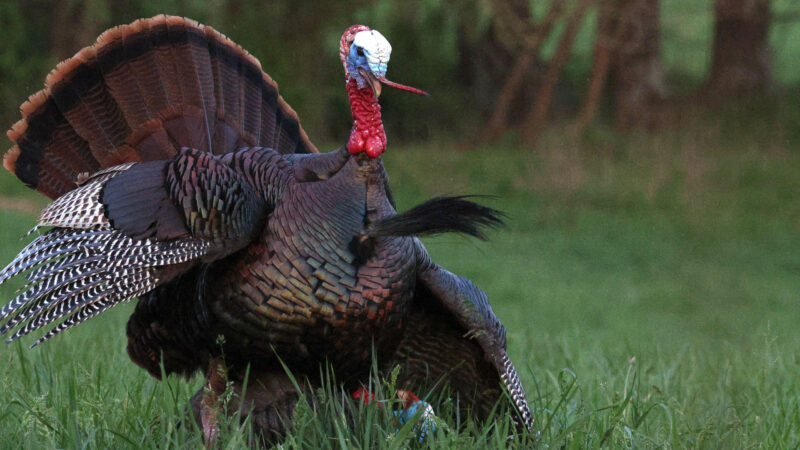
Early Season: Heavy Gobbling
While specific timelines vary slightly by region, once late-March to early April rolls around, the breeding cycle really kicks into gear. Hunters haven’t removed too many toms yet. Hunting pressure hasn’t peaked. And most hens haven’t been bred yet. And so, gobbling really increases, and honestly, is at its climax.
At this point, gobblers and hens are spending a lot of time together. Subordinate toms and jakes hang around, but largely remain satellite birds. Most hens aren’t being bred right now, but some are, and the breeding cycle is off to a significant start.
What It Means for Hunters: Many turkey seasons kick off between late-March and early April. This is still early in the breeding cycle. Therefore, it remains a good timeframe to use aggressive calling and decoying. That said, it can prove difficult to call in gobblers because they’re spending so much time with hens. Because of this, it sometimes pays off to call to the boss hens instead, and getting them fired up by mocking their exact vocalizations. Additionally, it also remains a good time to use aggressive decoying. A strutting tom decoy, or maybe a jake in an aggressive posture, along with one or a few hen decoys, can bring a boss tom in on a string.
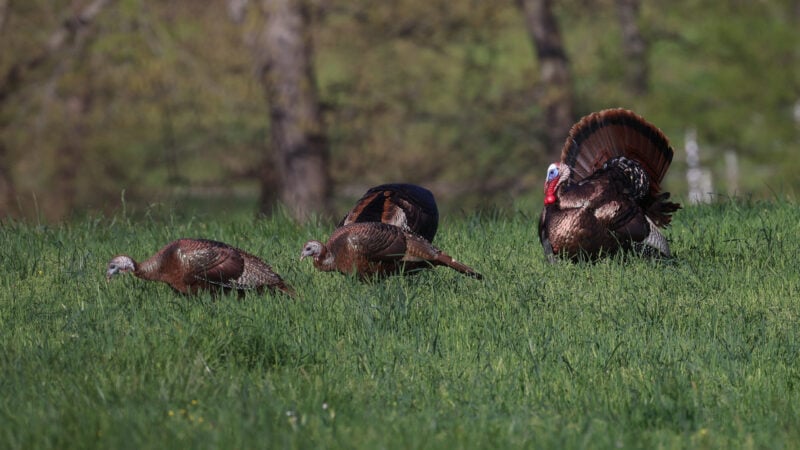
Mid-Season: Moderate Gobbling
As mid- to late-April arrives, a lot of hens have been bred. Generally, hens will breed several times, and with several dominant gobblers, to increase nesting success. Hens can store sperm for a month, but the back end of that window doesn’t have as much viability as the front end.
By this point, season dates depending, some gobblers have been killed. Obviously, this reduces gobbling heard and birds seen. Unfortunately, if most toms are removed too soon, it can greatly disrupt the breeding cycle. Most jakes don’t have viable sperm. So, it’s important to leave some gobblers, and not take them all, so that the breeding cycle can continue as needed.
What It Means for Hunters: Except for far-northern states, most seasons are already in by mid- to late-April. Where turkey seasons have been open for a while, and the breeding cycle is further along, it’s usually best to use more conservative calling and decoying tactics. That means less frequent and softer calling and less aggressive decoying. Consider a jake decoy in a three-quarter-, half-, or quarter-strut positioning with a single hen decoy.
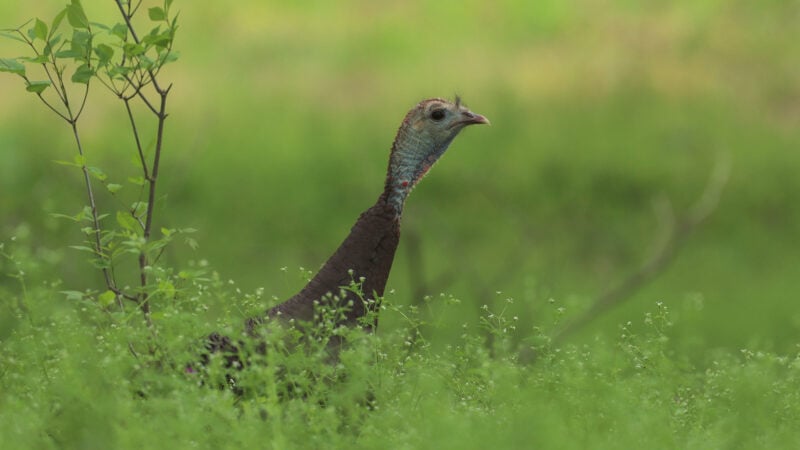
Late-Season: Decreased Gobbling
May sets in, and the late season emerges. Gobbling sometimes picks up as remaining gobblers have trouble finding receptive hens. That said, most of the time, gobbling continues to decrease as gobblers are bagged. Furthermore, as hens become less receptive, some toms lose interest, and thus, gobbling declines.
Now, a significant percentage of hens are spending time on and around the nest. Hens have a 10-12 day laying period. It’s common for predators to raid nests. Some hens will re-nest, even multiple times, if time allows. But some hens won’t attempt it again, especially later in the breeding cycle. Even if hens do re-nest a second or third time, these poults are at a great disadvantage, and few make it.
What It Means for Hunters: As May sets in, other than northernmost states, it’s now considered the late season. In southern and mid-latitude states, it’s best to be very conservative in your calling and decoying. Use soft calling unless a gobbler fires up and seems interested in aggressive calling. Consider storing your male turkey decoys and just implementing a single or pair of hen decoys.
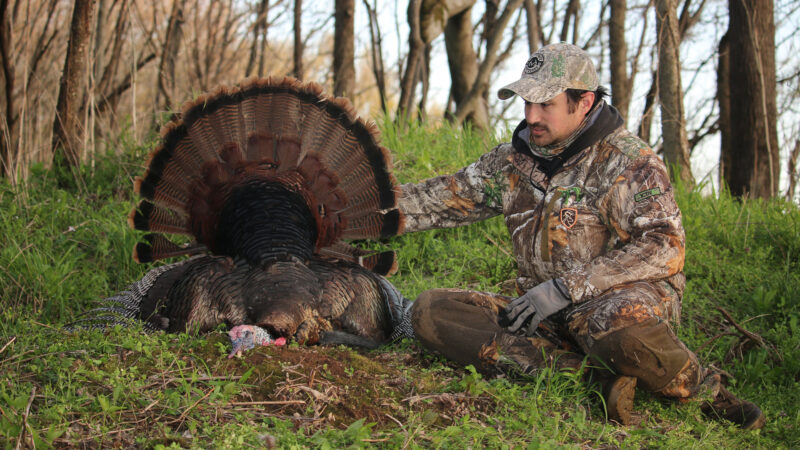
Summer Flocks
Summer marks a period where toms begin to group up with other longbeards. Jakes continue to group up as well, and might link up with toms if there aren’t many other jakes in the area. Furthermore, some hens will regroup, especially those that lost their nest, poults, or didn’t breed.
By June, it’s not uncommon to see a good number of poults on the landscape. By July, it’s a very common sight. Many won’t make it, but some will. And a fresh crop of jakes and jennies will bolster the turkey population for another year.
Of course, once fall rolls around, the entire process starts over. Within a few months, the wild turkey breeding cycle will kick off again.
Check out the latest BHOD turkey hunt below where Justin Zarr gets a gobbler in tight to the decoys.

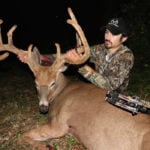 By
By 



